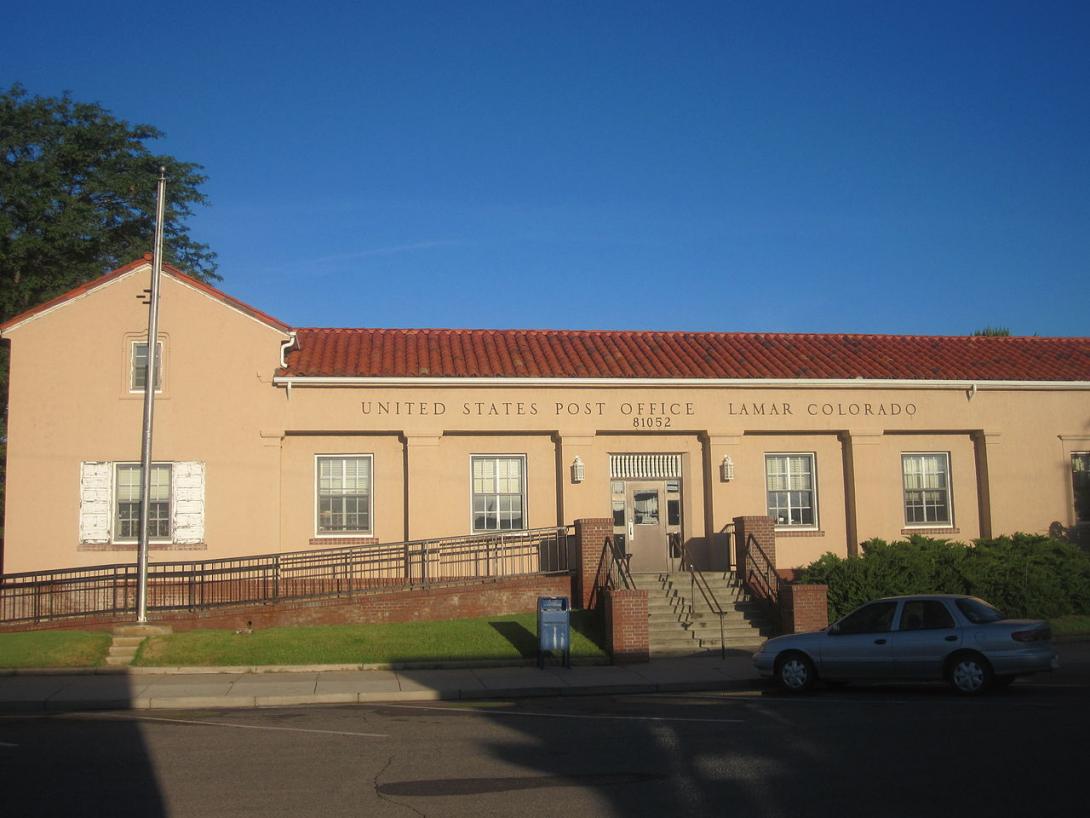Lamar Post Office
Full Article
The Lamar Post Office was built in 1936 as a Public Works Administration (PWA) project. Designed by Pueblo architect Walter DeMordaunt, the building is the only Spanish Colonial Revival post office built as part of the New Deal in Colorado. It is still in use and was listed on the National Register of Historic Places in 1986.
The PWA was a New Deal program designed to stimulate the economy by assisting local governments and agencies with the construction of large-scale public works. Unlike its cousin, the Works Progress Administration (WPA), the PWA emphasized architect-designed projects rather than local labor and handcraftsmanship. In addition to dams, airports, bridges, and schools, the PWA also built more than 400 post offices between 1933 and 1939.
The Lamar Post Office was one of only a few federal PWA projects completed in southeast Colorado. It was approved in November 1933 as part of a long list of emergency projects undertaken by the PWA. Soon a site was chosen at the corner of South Fifth and West Elm Streets, a block west of Lamar’s main business district, and three houses were removed to make way for the post office. Problems at the federal and state levels delayed the project, however, and it had to be approved again in June 1934. Even then, architect Walter DeMordaunt did not complete plans for the building until fall 1935. Once construction finally began in 1936, work proceeded quickly, and the post office opened that September.
Most small-town post offices built in Colorado as part of the New Deal were simple, symmetrical buildings without much ornamentation. For the Lamar Post Office, however, DeMordaunt designed a one-story Spanish Colonial Revival building with an asymmetric two-story section at the southern end. It was made of hollow tile and brick covered with stucco and featured a red-tile roof along the front elevation. The building resembled many small post offices constructed in southern California around the same time but was unlike any other post office in Colorado.
Aside from some small interior modifications in the 1960s, the building remains essentially unchanged.














